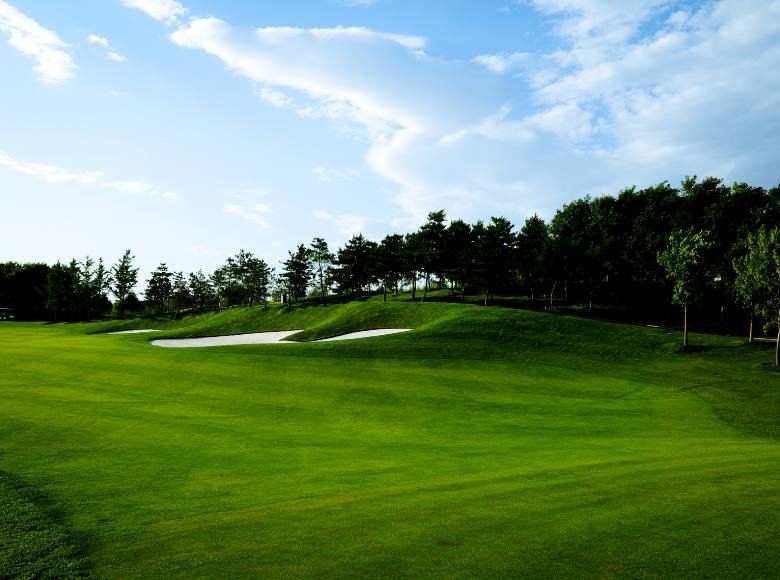To effectively maintain your Florida golf course in the face of climate challenges, you can implement the following key strategies – proactive disease and pest management, selecting drought-resistant grass varieties, implementing efficient irrigation systems to conserve water, proactive storm preparedness, proper aerification, among others.
Florida’s beautiful golf courses are renowned for their lush green fairways and stunning landscapes. However, the Sunshine State’s unique climate can present challenges for maintaining these golfing paradises. With a subtropical and tropical climate prone to intense heat, humidity, and unpredictable weather, Florida’s golf courses require specialized strategies for effective maintenance and environmental sustainability.
In this article, we will explore the innovative approaches and smart practices that golf course superintendents in Florida employ to adapt to the state’s changing climate while ensuring the utmost playability, aesthetic appeal, and sustainability of their courses.
Understanding Florida’s Climate

Florida’s climate is diverse, influenced by its geographical location and the surrounding bodies of water, including the Atlantic Ocean and the Gulf of Mexico. It is characterized by hot, humid summers, a distinct wet season, and the occasional threat of hurricanes and tropical storms. The subtropical and tropical nature of Florida’s climate necessitates a unique approach to golf course maintenance.
Challenges Presented by Florida’s Climate
Heat and Humidity: The high temperatures and humidity levels in Florida can take a toll on golf course grasses. Heat stress can result in thinning grass and even death in extreme cases.
Disease and Pest Pressure: Florida’s warm and wet climate creates an ideal breeding ground for turf diseases and pests, such as dollar spot, brown patch, nematodes, and chinch bugs. These issues can quickly devastate the greens and fairways.
Drought and Water Conservation: Paradoxically, Florida also experiences dry spells, and water conservation is a significant concern. Golf courses need to find a balance between keeping the turf lush and green while adhering to water restrictions.
Storms and Flooding: The threat of hurricanes and tropical storms can lead to flooding and wind damage, requiring quick recovery and resilience.
Strategies for Successful Golf Course Maintenance
Grass Selection: Choosing the right type of grass is crucial for Florida’s golf courses. Warm-season grasses, such as Bermuda and Zoysia, are better suited to the state’s climate due to their heat tolerance and ability to thrive in high temperatures.
Proactive Disease and Pest Management: Regular inspections and proactive disease and pest control measures are essential. Integrated pest management (IPM) and the use of disease-resistant grass varieties can minimize the need for chemical treatments.
Drought-Resistant Grass Varieties: Selecting drought-resistant grass varieties can help golf courses conserve water while maintaining attractive fairways. These grasses require less irrigation and are better suited to Florida’s periodic dry spells.
Water Management: Implementing efficient irrigation systems and monitoring technologies is key to conserving water. Utilizing smart controllers that adjust watering schedules based on weather conditions and soil moisture levels can optimize water use.
Storm Preparedness: Florida’s vulnerability to tropical storms and hurricanes necessitates proactive storm preparedness and recovery plans. Regularly trimming trees and removing debris can mitigate damage during storms, while fast recovery measures can ensure minimal downtime after extreme weather events.
Aerification: Proper aerification of golf course greens and fairways helps enhance soil structure, improve root development, and promote drainage. Regular aerification allows water to penetrate the soil, reducing runoff and preventing waterlogged areas.
Native Landscaping: Incorporating native and drought-resistant plants into the landscape can reduce maintenance needs and promote sustainability. These plants are adapted to Florida’s natural conditions and require less water and maintenance.
Environmental Sustainability: Adopting environmentally sustainable practices, such as using organic fertilizers, reducing pesticide use, and minimizing energy consumption, helps golf courses reduce their ecological footprint while maintaining course quality.
Education and Training: Ongoing education and training for golf course staff and superintendents are crucial. Staying informed about the latest industry advancements and climate adaptation techniques is essential for success.
Consulting with Experts: Collaborating with golf course maintenance experts, agronomists, and horticultural consultants can provide valuable insights and strategies for tackling specific climate-related challenges.
Adapting to Florida’s changing climate is essential for maintaining the lush and inviting golf courses that the state is known for. By implementing a combination of the strategies mentioned above, golf course superintendents can navigate the unique climate challenges and ensure the long-term sustainability and playability of their courses.
With a proactive approach and a commitment to environmentally friendly practices, Florida’s golf courses can continue to thrive and provide golf enthusiasts with unforgettable experiences amidst the state’s natural beauty.
Are you ready to elevate your Florida golf course’s playability and beauty in the face of changing climate challenges? Partner with DTE Golf®, your trusted experts in golf course maintenance. Our dedicated team specializes in adapting to Florida’s unique climate and ensuring the utmost sustainability and playability. Contact us today to explore how we can enhance your golf course’s resilience and maintain its lush allure amidst the changing climate.
